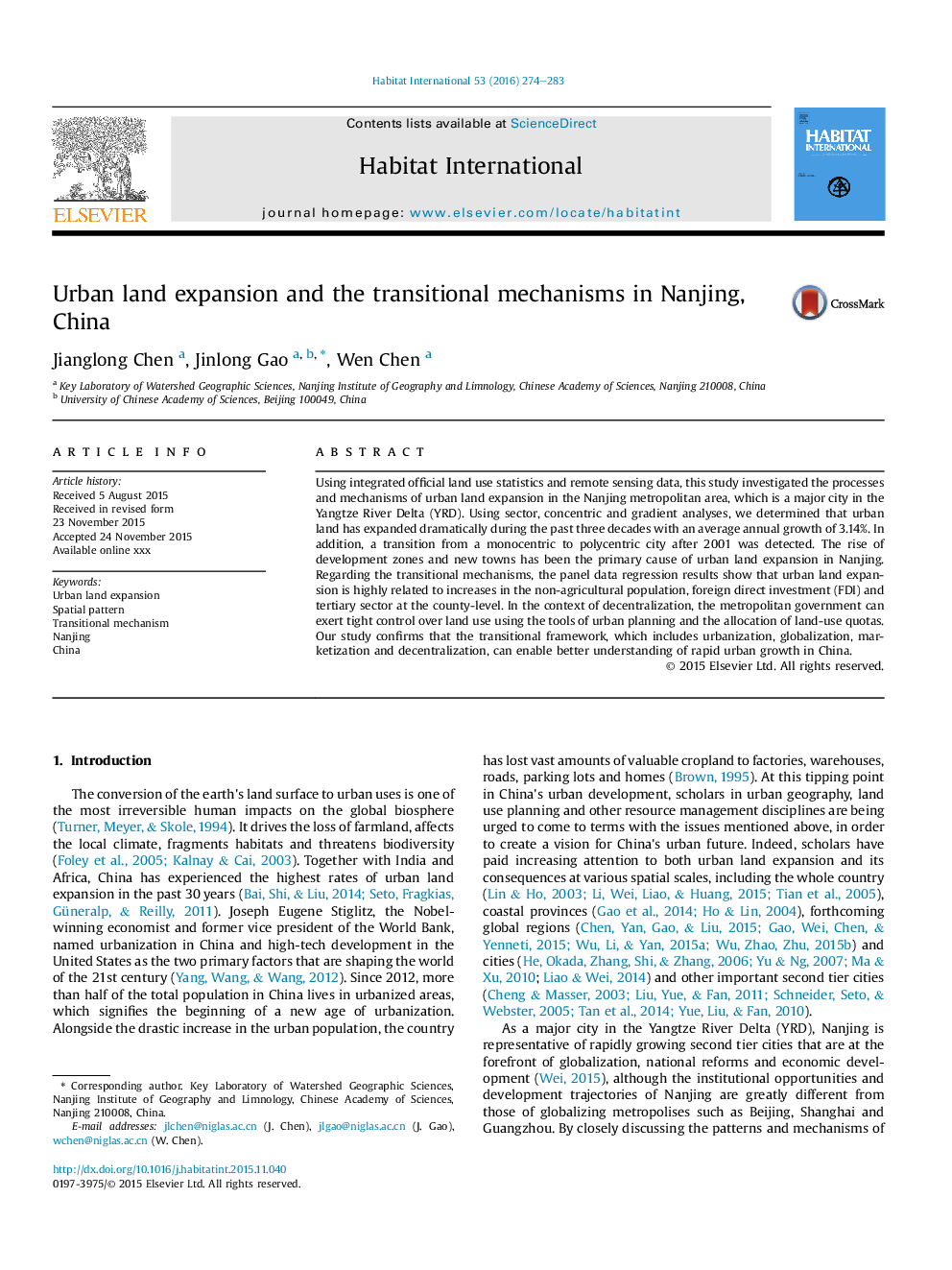| Article ID | Journal | Published Year | Pages | File Type |
|---|---|---|---|---|
| 7455638 | Habitat International | 2016 | 10 Pages |
Abstract
Using integrated official land use statistics and remote sensing data, this study investigated the processes and mechanisms of urban land expansion in the Nanjing metropolitan area, which is a major city in the Yangtze River Delta (YRD). Using sector, concentric and gradient analyses, we determined that urban land has expanded dramatically during the past three decades with an average annual growth of 3.14%. In addition, a transition from a monocentric to polycentric city after 2001 was detected. The rise of development zones and new towns has been the primary cause of urban land expansion in Nanjing. Regarding the transitional mechanisms, the panel data regression results show that urban land expansion is highly related to increases in the non-agricultural population, foreign direct investment (FDI) and tertiary sector at the county-level. In the context of decentralization, the metropolitan government can exert tight control over land use using the tools of urban planning and the allocation of land-use quotas. Our study confirms that the transitional framework, which includes urbanization, globalization, marketization and decentralization, can enable better understanding of rapid urban growth in China.
Related Topics
Social Sciences and Humanities
Social Sciences
Development
Authors
Jianglong Chen, Jinlong Gao, Wen Chen,
